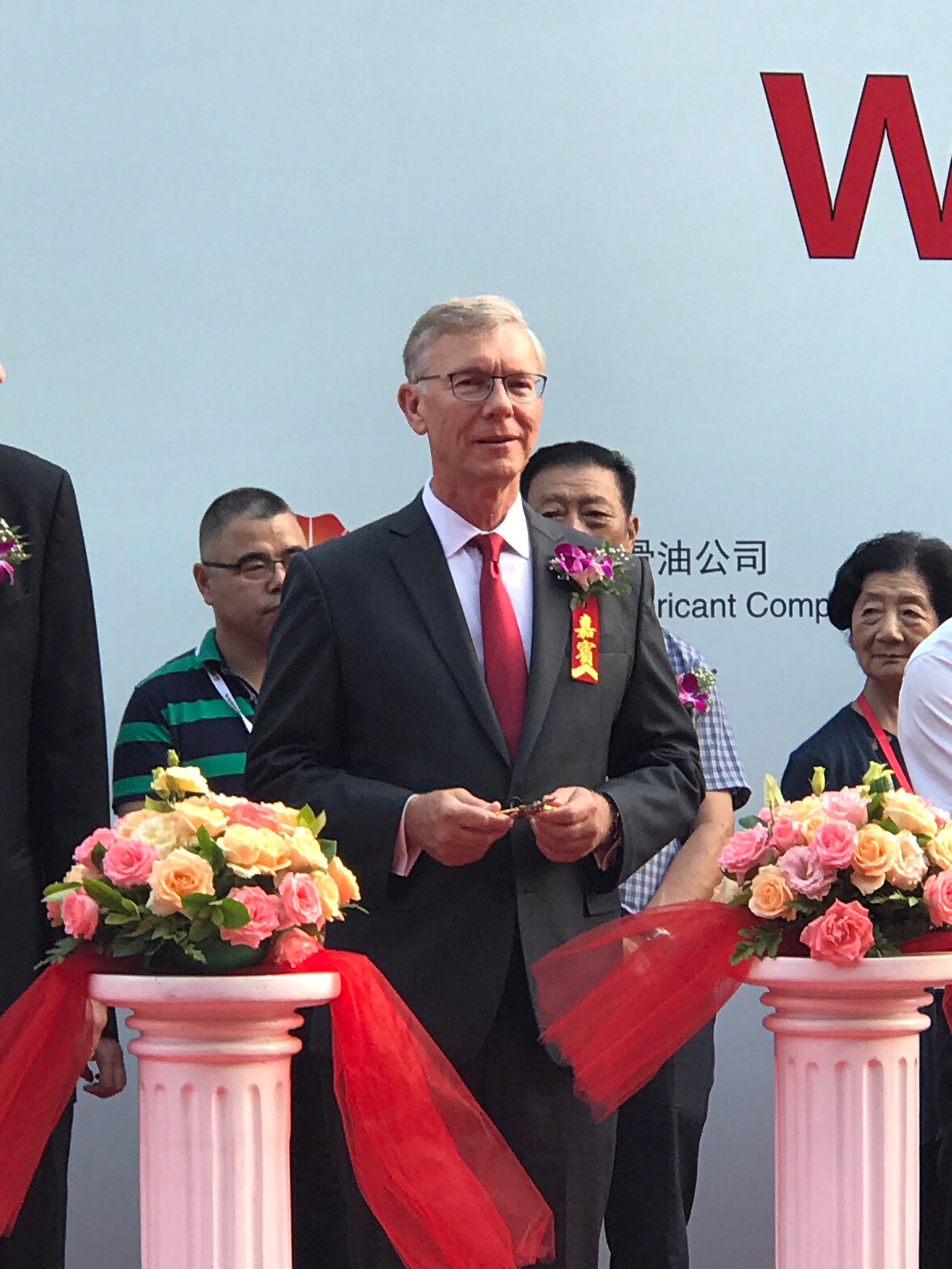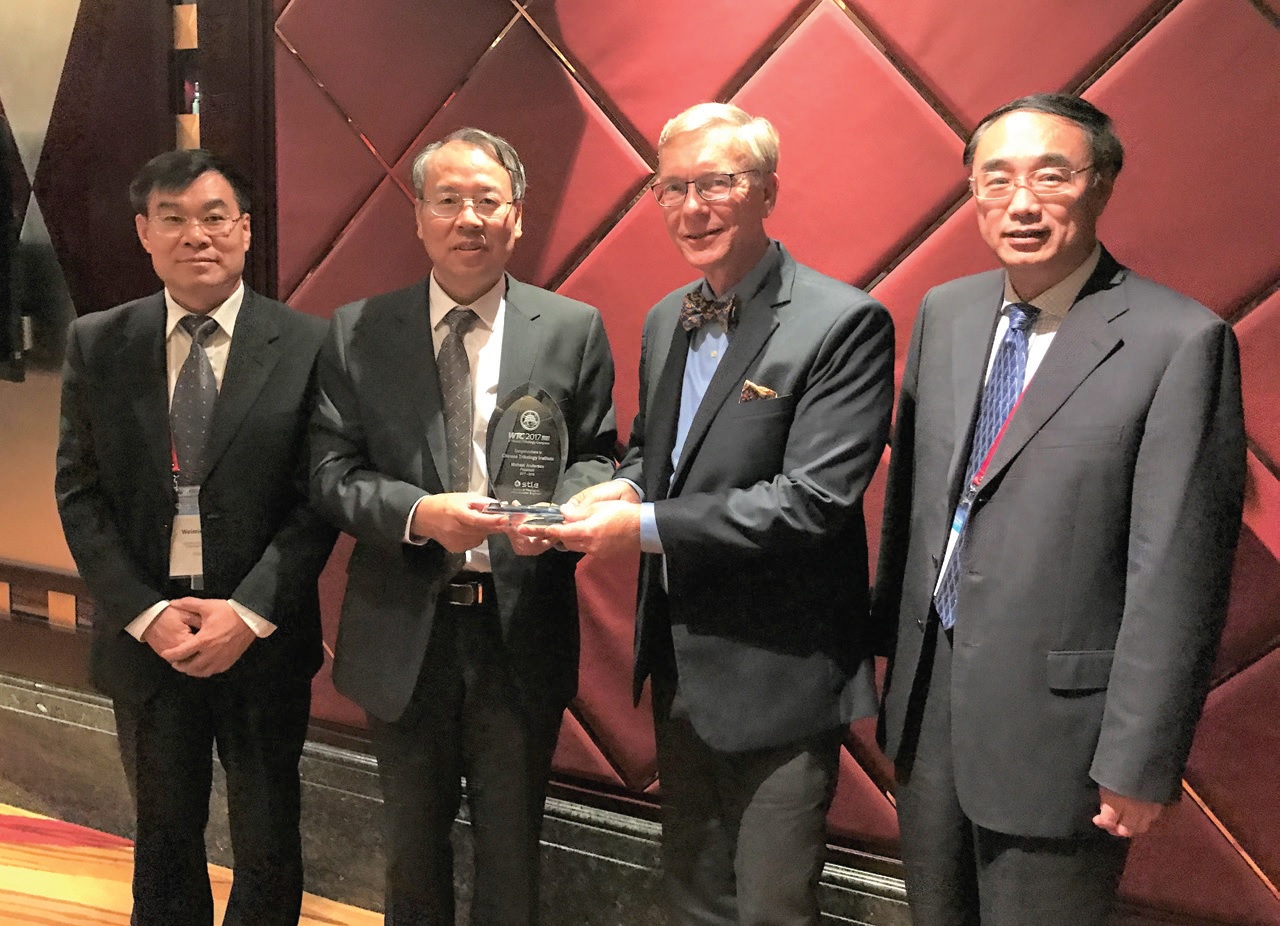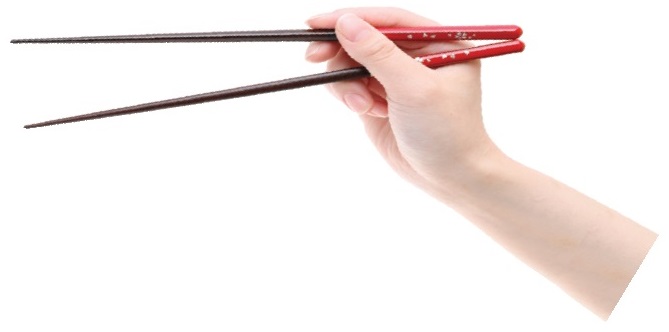A month of tribology
Michael Anderson | TLT President's Report November 2017
STLE’s role at three industry conferences cemented our reputation as a leader on the world stage.

I was honored to be part of the ribbon-cutting ceremony at the 18th International Chinese Lubricant and Technology Exhibition in Beijing.
SEPTEMBER WAS A BUSY MONTH with regard to international tribology activities. The highlight, of course, was the 6th World Tribology Congress (WTC) held in Beijing, China, in mid-September. This international event occurs every four years and each time is hosted by a tribology group in a different country.
The WTC is run by tribologists in the host country under the direction of the International Tribology Council (ITC). The ITC consists of members from 39 different countries and is responsible for WTC site selection. The first WTC was held in London in 1997 and was founded by none other than Dr. Peter Jost, who led the ITC until his death earlier this year. Other locations were Vienna, Austria, in 2001; Washington, D.C., in 2005; Kyoto, Japan, in 2009 and Torino, Italy, in 2013.
One of the tasks at the Beijing meeting was selecting a new ITC president to succeed Dr. Jost. STLE’s own Immediate Past President, Dr. Ali Erdemir with Argonne National Laboratory, was chosen. This is the latest in a long series of well-deserved honors bestowed upon Dr. Erdemir. The ITC also selected Lyon, France, for the 2021 WTC. Located in the east-central part of the country, Lyon is France’s third-largest city after Paris and Marseille and is known for its culture, cuisine and history, which dates back to the Renaissance. This should be a great site for the 2021 event.
The WTC opened on a Sunday with a full suite of education courses. STLE Vice President Greg Croce with Chevron Products Co. and I gave talks on lubricant additives and tribology testing, respectively. Following a grand reception Sunday evening, Monday morning began with a video on the history of tribology that showcased history’s greatest tribologists, many of whom are our contemporaries.
The 2017 WTC drew more than 2,000 registrants and students, and 944 papers were presented. The conference closed Thursday evening with a banquet that featured local Chinese entertainment. Recognition was made to the WTC’s nearly 150 volunteers, mostly students from Tsinghua University. These students are very passionate about their studies and certainly represent a bright future for tribology.
STLE’s executive board and staffers in attendance enjoyed a private dinner with the chairman of the WTC and his associates. As STLE president, I presented the WTC’s chair, Professor Jianbin Luo, with an award recognizing his efforts in producing such a successful conference. Professor Luo also is the 2013 recipient of STLE’s International Award, the society’s highest technical honor.
 STLE presented an award to conference chair Jianbin Luo honoring his team’s efforts in producing the 2017 World Tribology Congress in Beijing. The conference drew more than 2,000 attendees and featured 944 technical presentations.
STLE presented an award to conference chair Jianbin Luo honoring his team’s efforts in producing the 2017 World Tribology Congress in Beijing. The conference drew more than 2,000 attendees and featured 944 technical presentations.
During the same week as the WTC, but at a different location in Beijing, the 18th International Chinese Lubricant and Technology Exhibition took place. This conference provides a forum for lubricant manufacturers, testing equipment manufacturers and users to showcase their products. I was one of two people asked to give an opening address for the exhibition and participate in the ribbon-cutting ceremony.
In the week prior to the WTC, the Chinese Lubricant and Technology Forum took place in Kunming, China. This two-day conference is sponsored by SINOPEC Lubricant Co. Ltd. and PetroChina Lubricant Co., both major oil companies. I delivered a 20-minute presentation on tribology and testing and attended a private dinner with our corporate hosts.
CHOPSTICK TRIBOLOGY
While in China, it is customary to eat with chopsticks. Eating with chopsticks can present embarrassing challenges to Westerners accustomed to eating with cutlery.
I quickly noticed that chopsticks are made from a variety of different materials. Disposable wooden chopsticks are most frequently used in the U.S., but in China plastic chopsticks are popular in restaurants because they can be cleaned and reused. Other popular chopsticks materials include metal and porcelain. In one restaurant I encountered plastic chopsticks with surface texturing on the tips to increase coefficient of friction, thus facilitating the ability to hold onto the food in transit to one’s mouth.
Each of these materials presents different levels of ease of use. The reason is, tribologically speaking, the coefficient of friction between the chopstick material and food.
 © Can Stock Photo / akiyoko
© Can Stock Photo / akiyoko
I rank the ease of use of chopstick materials as follows:
•
Wood
•
Plastic with surface texturing
•
Plastic
•
Steel
•
Porcelain.
This is just one more example proving that tribology is everywhere!
 Mike Anderson is Area Manager Asia Pacific/Latin America for Falex Corp. in Sugar Grove, Ill. You can reach him at manderson@falex.com
Mike Anderson is Area Manager Asia Pacific/Latin America for Falex Corp. in Sugar Grove, Ill. You can reach him at manderson@falex.com.